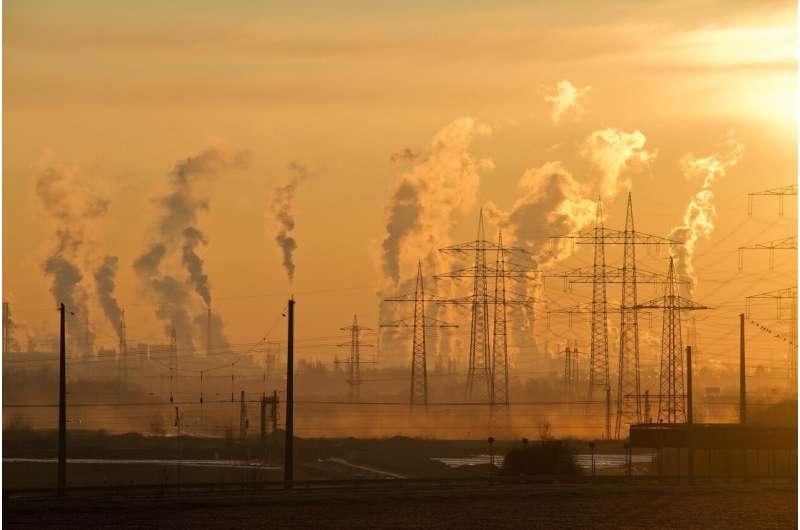This article has been reviewed according to Science X's editorial process and policies. Editors have highlighted the following attributes while ensuring the content's credibility:
fact-checked
trusted source
proofread
Air quality data show air pollution challenges unequally spread throughout the world

As global pollution edged upward in 2021, so did its burden on human health, according to new data from the Air Quality Life Index (AQLI). If the world were to permanently reduce fine particulate pollution (PM2.5) to meet the World Health Organization's (WHO) guideline, the average person would add 2.3 years onto their life expectancy—or a combined 17.8 billion life-years saved worldwide.
According to the data, particulate pollution remains the world's greatest external risk to human health, with the impact on life expectancy comparable to that of smoking, more than three times that of alcohol use and unsafe water, and more than five times that of transport injuries like car crashes. Yet, the pollution challenge worldwide is vastly unequal.
"Three-quarters of air pollution's impact on global life expectancy occurs in just six countries, Bangladesh, India, Pakistan, China, Nigeria and Indonesia, where people lose one to more than six years off their lives because of the air they breathe," says Michael Greenstone, the Milton Friedman Distinguished Service Professor in Economics and creator of the AQLI along with colleagues at the Energy Policy Institute at the University of Chicago (EPIC).
"For the last five years, the AQLI's local information on air quality and its health consequences has generated substantial media and political coverage, but there is an opportunity to complement this annual information with more frequent—for example, daily—and locally generated data."
Indeed, many polluted countries lack basic air pollution infrastructure. Asia and Africa are the two most poignant examples. They contribute 92.7% of life years lost due to pollution. Yet, just 6.8 and 3.7% of governments in Asia and Africa, respectively, provide their citizens with fully open air quality data. Further, just 35.6 and 4.9% of countries in Asia and Africa, respectively, have air quality standards—the most basic building block for policies.
The collective current investments in global air quality infrastructure also do not match where air pollution is having its greatest toll on human life. While there is a large global fund for HIV/AIDS, malaria, and tuberculosis that annually disburses 4 billion USD toward the issues, there is no equivalent set of coordinated resources for air pollution.
In fact, the entire continent of Africa receives under 300,000 USD in philanthropic funds toward air pollution (i.e. the current average price of a single-family home in the United States). Just 1.4 million USD goes to Asia, outside of China and India. Europe, the United States, and Canada, meanwhile, receive 34 million USD, according to the Clean Air Fund.
"Timely, reliable, open air quality data in particular can be the backbone of civil society and government clean air efforts—providing the information that people and governments lack and that allows for more informed policy decisions," says Christa Hasenkopf, the director of AQLI and air quality programs at EPIC. "Fortunately, we see an immense opportunity to play a role in reversing this by better targeting—and increasing—our funding dollars to collaboratively build the infrastructure that is missing today."
More information: Read the Full Report
Provided by University of Chicago





















